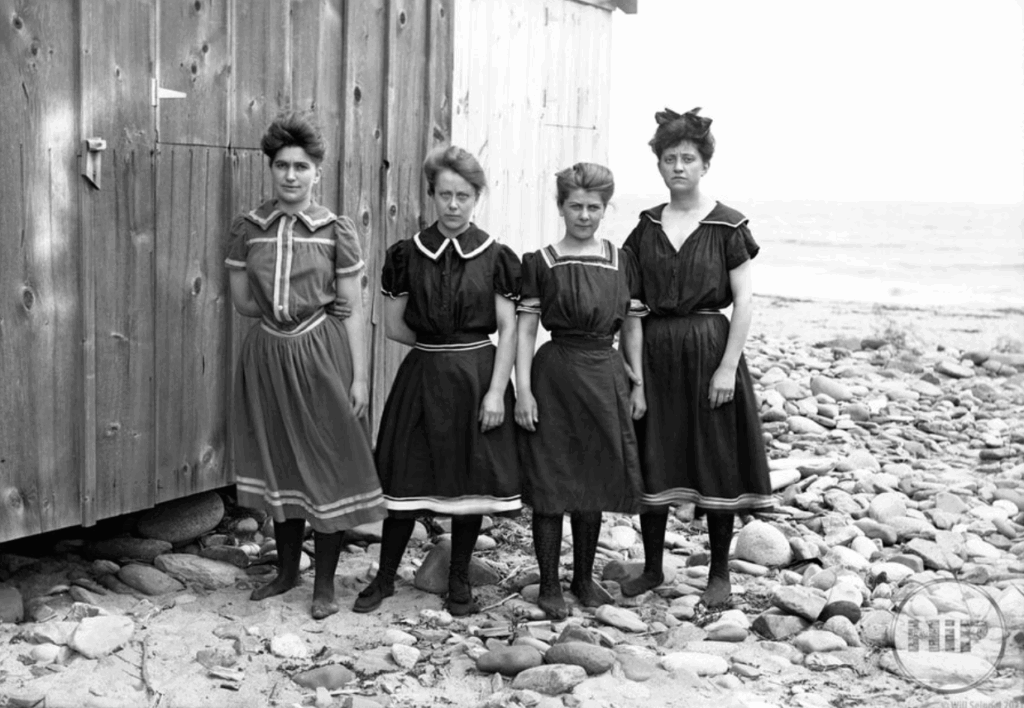BLOG
Finds and Interests
Some of you may know that I collect vintage photographs and negatives. I have built such an extensive collection that I created a website called History in Photographs (HIP) to showcase and sell the photos. These aren’t just simple snapshots; they give us a glimpse into history and leave us with questions.
I am excited to begin sharing my collection by selecting a few of the most intriguing photographs and inviting different experts to help us piece together the hidden narratives. Every picture tells a story, and it’s up to us to uncover it.
Our expert, Meghan Boemer, is a historical interpreter, reenactor, and writer who has traveled thousands of miles to learn about historical locations, records, and figures. She has agreed to share her expertise in period clothing with me, hoping to enhance our understanding of the subjects in the photos.

We sent Meghan the photo above to tell us more about what might be happening. She writes,
These women have gone to the beach and are wearing bathing suits. These outfits were made entirely of wool. Wool can absorb about a third of its weight in water, which means they were quite heavy. They were worn more as wading outfits or just beachwear for relaxing on the beach rather than for swimming in the ocean, since with all that fabric, the garment’s weight wouldn’t make them safe to swim in.
As with a lot of fashion, a hemline says a lot. Boemer explained,
The length of these skirts and the fact that all these women wear stockings date this to the 1890s. As these suits evolved, it became more acceptable to show bare legs, and skirts shortened. It’s hard to believe by today’s standards, but wearing bathing suits at the beach caused a stir and eventually resulted in a sort of beach police who would ensure women dressed indecently in public. Women’s skirts were usually floor length, so showing that much leg likely left them feeling very exposed. They all look uncomfortable with being ogled in this photo.
I love learning more about these photos. Having more information about them makes them come alive a bit, bringing some of the past into our present. Check out the rest of the collection here, and let me know if there are any snapshots you can tell us more about or any you’re wondering about. You can contact me on LinkedIn.